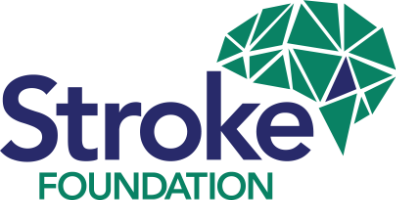Financial Support Considerations After Stroke
No-one budgets for an injury or illness in life. But when it happens, we need to find a way through.
More and more working age Australians are experiencing strokes, so considering the impact such an unexpected event might have on you or your family is important.
For some people not being able to work can be significant. In addition to the financial challenges this presents, stroke can change a person’s physical ability to carry out their job, it can alter their friendships, and create a sense of isolation.
For some the overall sense of purpose and contribution can shift post-stroke. There is often a period of adjustment, however the sense of purpose and contribution becomes different – not better, not worse, just different.
A common theme is that day-to-day expenses are likely to continue and, together with additional costs for medical treatment and equipment, these begin to cause financial worry and stress.
Some of the financial stress can be reduced via a personal insurance claim, however awareness of personal insurance is low. Industry research highlights that at least 40% of survey respondents aged 18-64 years are not aware they have personal insurance either inside, or outside, of superannuation. Personal insurance is intended to provide financial security to individuals and their families when they are injured or ill. A basic level of personal insurance may often be linked to a superannuation fund. Alternatively, personal insurance may also have been purchased directly.
Personal insurance is different and separate from private health insurance.
Personal insurance such as income protection can replace up to 75% of income if the policy holder is unable to work due to an injury or illness – such as stroke.
Options for assistance with your personal insurance claim
Before starting the personal insurance claim process, it may be helpful to review the ASIC MoneySmart website’s section about making an insurance claim.
Options of personal insurance claim assistance include:
- The insurer — contact them directly
- Your financial adviser / accountant
- The superannuation fund — contact your fund directly
- Financial Rights Legal Centre
- A personal insurance claims advocate service — specialising in claims advice and assistance
Specialist advice
For survivors of stroke who choose to explore their own personal insurance claim, there may be some considerations that are relevant:
Ask the insurer to provide the insurance policy document which was applicable when the policy was purchased, to ascertain the policy definitions that applied at that time. relevant insurance cover was in place at the time. This may also be helpful if a current superannuation statement reads “nil cover” as there may have been cover at the time of stopping working.
Some superannuation funds have a default insurance cover. This may include income protection (replacing 75% of income if you are unable to work) and/or Total or Permanent Disability (TPD) cover. TPD pays a lump sum benefit to those who will never return to work, to help with rehabilitation and living costs.
For survivors of stroke who are only able to resume working part time, a partial income protection claim may apply. For partial claims, an employer pays some income, and the insurer tops up to a maximum of 75% of the pre-stroke income amount.
Personal insurance can be paid even if payments from injury compensation schemes such as Traffic Accident Compensation or Workers Compensation, are already being received, or if the survivor of stroke is a National Disability Insurance Scheme (NDIS) participant.
Finally, while more than half of personal insurance clients believe their insurer may not pay their personal insurance claim, over 95% of correctly lodged claims are paid.
With thanks to AFRM Claims Advocacy, Personal Insurance Claim Advocate Service and Supporting Sponsor of the 2022 Stroke Awards, for providing the information for this article.

